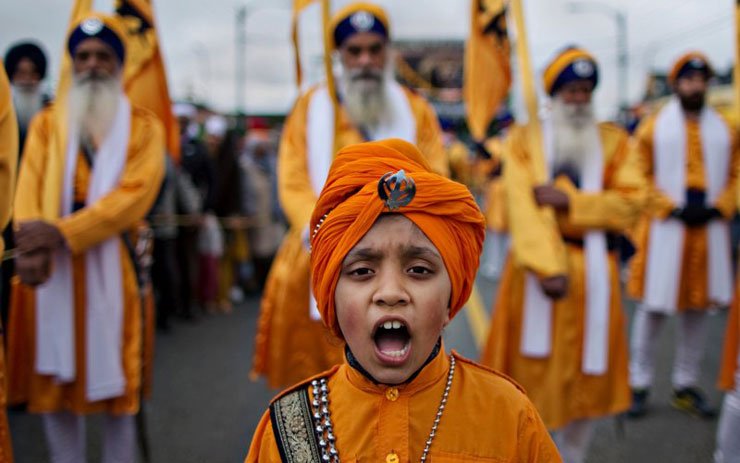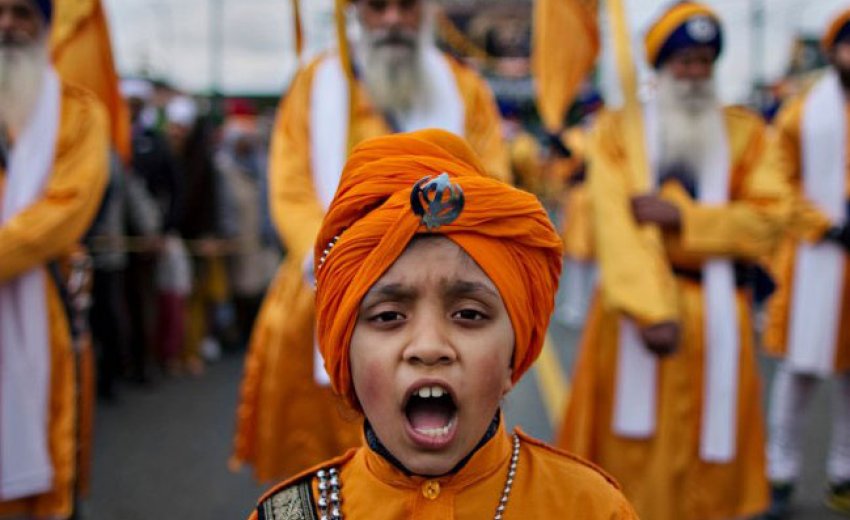
Every April, communities across the world come together to celebrate Vaisakhi. For centuries, Vaisakhi has marked the spring harvest, and Punjabi farmers have celebrated this occasion with community gatherings and festivals.
Vaisakhi took on special significance for the Sikh community in 1699, when the tenth of the Sikh Guru-Prophets—Guru Gobind Singh (1666-1708 CE)—invited his disciples to join him in the city of Anandpur Sahib. At this gathering, Guru Gobind Singh formally established the Khalsa Panth (the community of committed Sikhs) and publicly entrusted it with leadership.
Every year on Vaisakhi, Sikhs come together to commemorate and reflect on this significant historical event. While the community holds a special place in its collective heart for this occasion, Vaisakhi is not a “holiday” in that the Sikh tradition does not regard any one time or day to be uniquely “holy.” Rather, it is an occasion for celebrating the community’s growth and for recalling a set of shared values and collective memories. In both its cultural and religious context, Vaisakhi is fundamentally about community, progress, and celebration.
Some people mistake Vaisakhi of 1699 as the initial moment of Sikh community formation, so it is particularly important to recognize that Guru Nanak (1469-1539 CE) started the process of forming the Sikh community nearly two centuries earlier. Among other things, he gathered disciples, created community centers, and established shared traditions. The community grew substantially under the leadership of his successors over the next 200 years, and the expectations and responsibilities of the community also increased during this period. This development culminated on Vaisakhi of 1699 when Guru Gobind Singh established a formal order of committed Sikhs—the Khalsa Panth—and bowed before its representatives as a way of indicating the transmission of corporeal authority. The Sikh theology urges cultivation of the individual self while also serving and nurturing the communities around us, an integration of the spiritual and temporal domains.
The 1699 inauguration of the Khalsa Panth also demonstrates an integration of the spiritual and political. The political aspects of this occasion are more apparent. Guru Gobind Singh’s decision to pass on political authority to the Khalsa Panth took place during a period of intense political tensions between the reigning Mughal Empire and the Sikh community. On this occasion, Guru Gobind Singh standardized a core of discipline, practice, and identity around which the Sikh community continues to be centered.
While playing a role in demarcating a community and enhancing group cohesion, these shared practices also play a significant role in enriching one’s spiritual development. One way in which this occurs is through ethical cultivation—a constant practice of discipline facilitates the cultivation of moral faculties. Aristotle referred to this moral training as habitus, the formation of habits through regular practice that informs our decision-making in diverse situations. Engaging with these bodily and ritual practices serves to enrich the human spirit within.
Similarly, the Sikh tradition posits that the role and significance of community is not limited to the political domain. Sikh doctrine emphasizes the central roles that communities play in shaping our spiritual journeys and encourages practitioners to seek out intentional communities that share the same ethical values and spiritual commitments.
In the Sikh spirit, Vaisakhi celebrates the integration of the spiritual and temporal worlds, and it provides practical avenues for bringing these to bear through shared values and practices. Vaisakhi is fundamentally about community, celebration, and progress, and these values are at the forefront of the collective consciousness as Sikhs gather together to mark the occasion.






